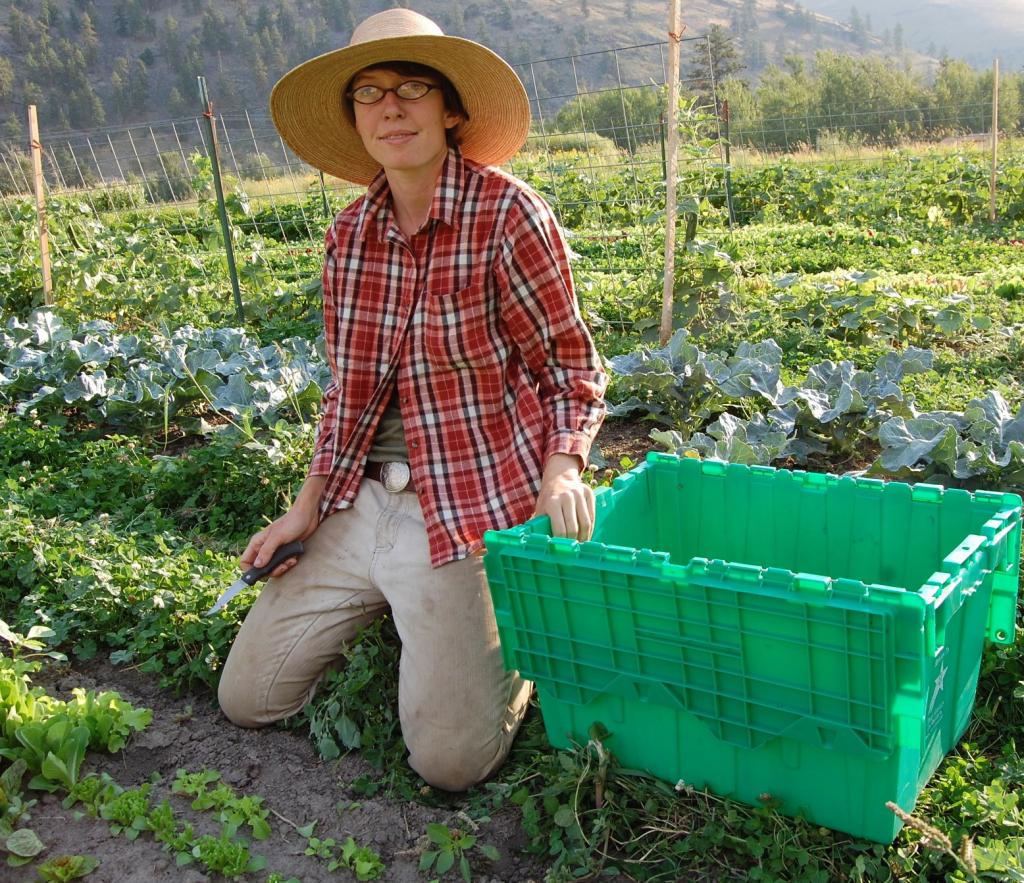
Senator Debbie Stabenow, head of the Senate Ag Committee, has pledged to get a farm bill passed by September. (Photo by Lance Cheung for the USDA.)
Right now, the Farm Bill needs a hero, and Sen. Debbie Stabenow thinks she’s up for the job. Despite serious setbacks, the Democrat from Michigan is confident she and the committee she chairs can work with the House committee to pass a new farm bill before the current one runs out in September.
And, while hearing Stabenow speak at a conference last week, I just about believed her. The senator has worked on a handful of farm bills before this one and she knows what it takes. But, as I mentioned in a recent post, she’s up against a formidable round of cuts. The Tea Party-driven House Agriculture Committee not only wants to cut $33 billion (compared to the Senate’s $23 billion), but they want to make most of those cuts to the Supplemental Nutrition Assistance Program (SNAP, or food stamps).
Food stamps aside for the moment, there’s still quite a bit on the table. The Senate released a draft of its version of the 2012 Farm Bill a few weeks back, and that draft is supposed to hit the Senate floor in June; the National Sustainable Agriculture Coalition (NSAC) is guessing mid- to late-June, more precisely. Until that point, a variety of food movement advocacy groups will be looking to make a big push to inch the Senate bill in a sustainable direction — one that puts local, organic food and fruit and vegetable production high on the national priority list.
The Senate draft does make some important — if small — strides. (Of course it helps that the committee lowered expectations dramatically last fall during the so-called “Secret Farm Bill” process.) As Craig Cox of the Environmental Working Group (EWG) put it in a recent statement by the group, the bill it proposes would “support healthy diets, expand links between local farmers and consumers and help new farmers,” even if the funding for such efforts is comparatively small given the size of the overall bill. For instance, the Senate is earmarking $100 million for the Farmers Market and Local Food Promotion Program and $70 million annually for the Specialty Crop Block Grant program, which is designed to help fruits and vegetables compete with commodity crops. That may sound good but, when put in context, they’re mere slivers compared to total farm bill pie, which will cost $85 billion a year.
Indeed, a great deal of that money will go to subsidize commodity farmers through what’s being called crop insurance, but amounts to what is essentially income insurance. Nonetheless, Cox points out that the Senate has at least proposed linking these subsidies to some conservation efforts. In the EWG statement, he says the committee “took an important step to limit insurance subsidies for farmers who plow up grasslands in order to grow crops.” The NSAC blog covered this important change as well, saying:
The Senate Committee-passed bill caps [Agricultural Risk Coverage] payments at no more than $50,000 per farm per year, and also includes important new “actively engaged in farming” requirements that close existing loopholes that currently allow mega farms to collect many multiple times the legal payment limit.
When the bill does go to the Senate floor next month, NSAC is optimistic that additional amendments will be proposed, like one to cap insurance subsidies. As the organization’s blog puts it, “NSAC is currently involved in discussions on a half dozen potential floor amendments.”
Meanwhile, some lawmakers are also working to influence the forthcoming House draft. For instance, last week, some 30 House Democrats from California sent a letter [PDF] urging the House Agriculture Committee’s leaders to level the playing field for a state that has very little commodity farming. They asked “to expand funding for programs that promote local and regional food systems and organic farming and that support beginning and disadvantaged farmers, agricultural research and marketing.”
All this also might explain why farm bill advocacy efforts — by groups like CREDO, Slow Food, and NSAC — haven’t died down, even if it seems as if the visions they put forth are wildly different from the reality of the bill. And while it’s still possible that the House will delay the whole Farm Bill by insisting on extreme SNAP cuts, it looks like the budget numbers only get worse in 2013. So what might matter most at this point is that this Farm Bill — or really any farm bill — passes by September.
And the more members of Congress hear from constituents — phone calls and individual letters are the most effective — that food and farming matter to people other than the big commodity farmers (who have already had plenty of opportunity to speak to the committees), the more likely they are to put forth the kinds of risky, progressive amendments NSAC is talking about.
Steph Larsen, an occasional Grist contributor and an organizer at Nebraska’s Center for Rural Affairs, is one person pushing to get sustainable farmers, voters, and others in the Midwest to make their voices heard while there’s still time.
“Say it’s 6 p.m. on election night, or the top of the eighth inning,” says Larsen. “Of all the moments to walk away, is that the one to pick? For farm and food policy in the U.S., it’s getting to be that moment. The next five years of what we eat and how it’s grown are being written as we speak. And since we all eat, we are all impacted by the results.”



